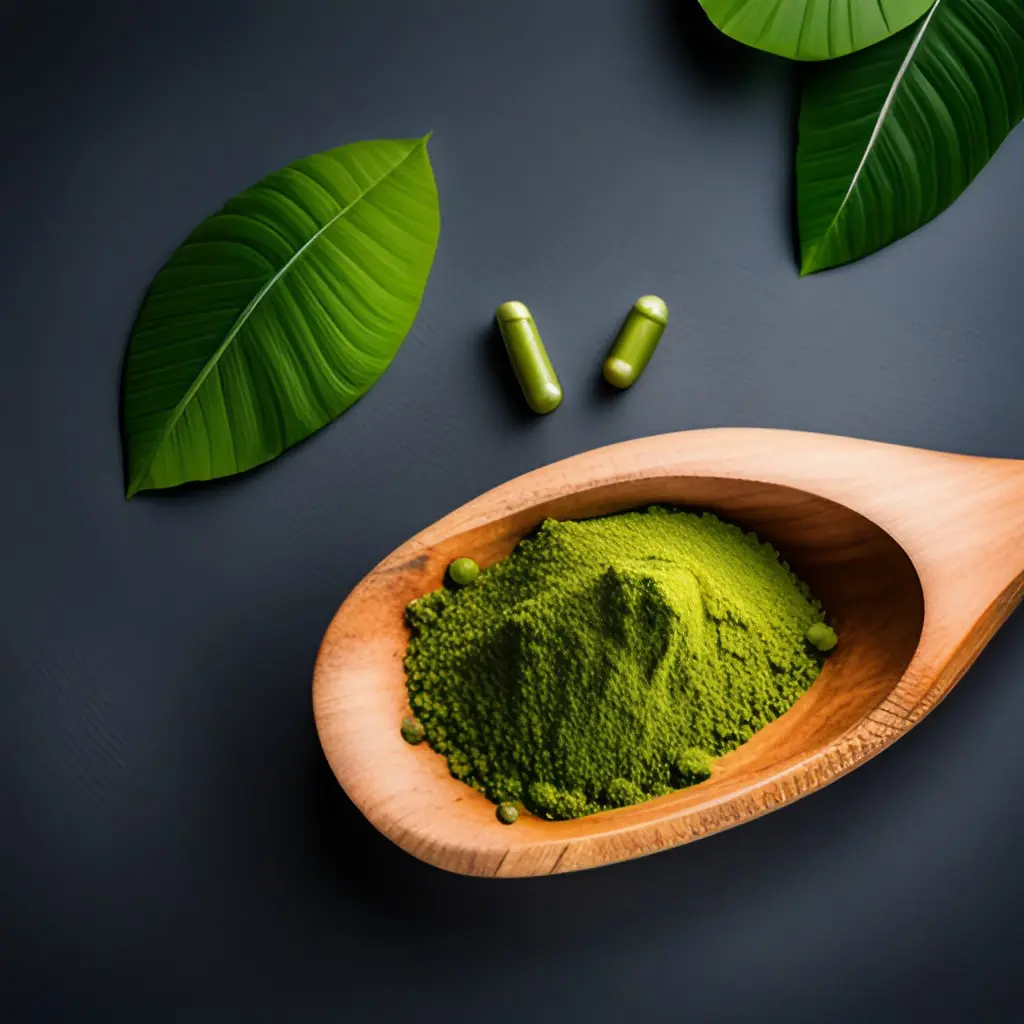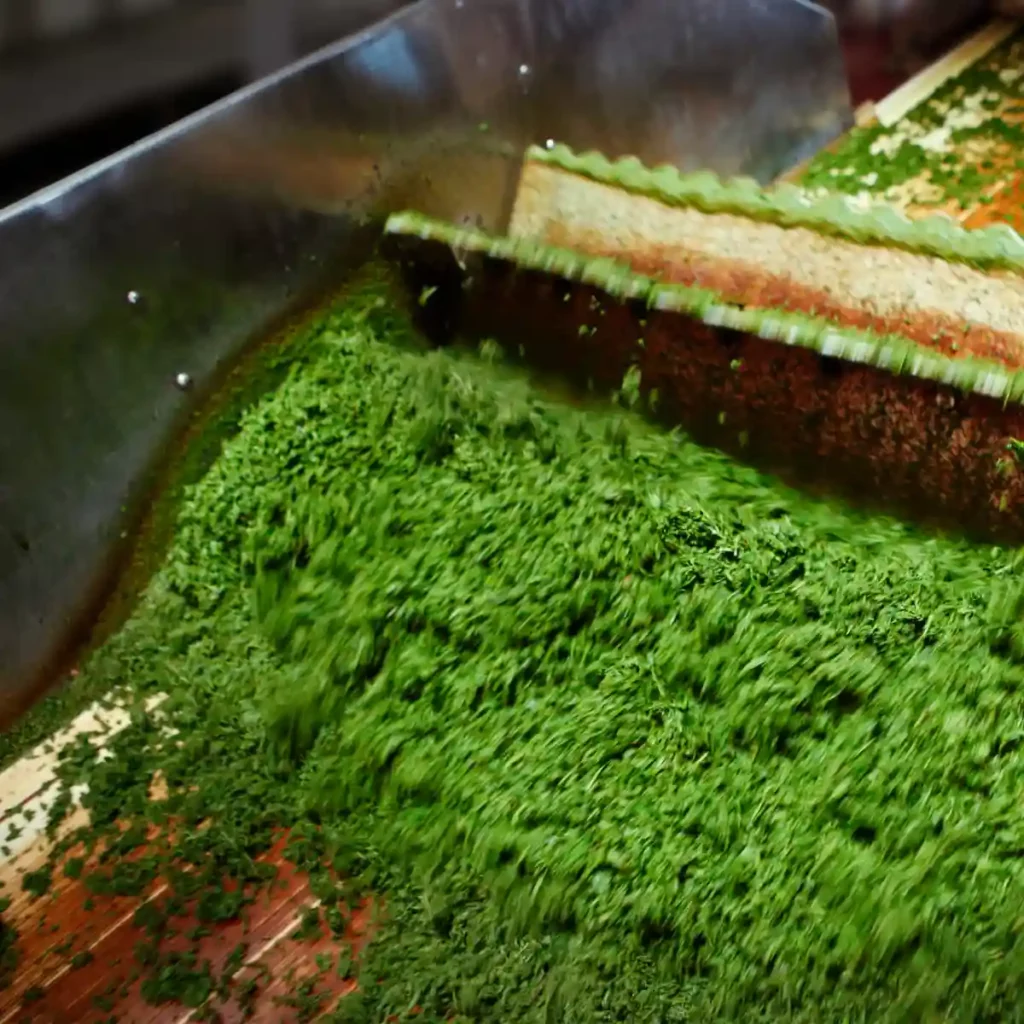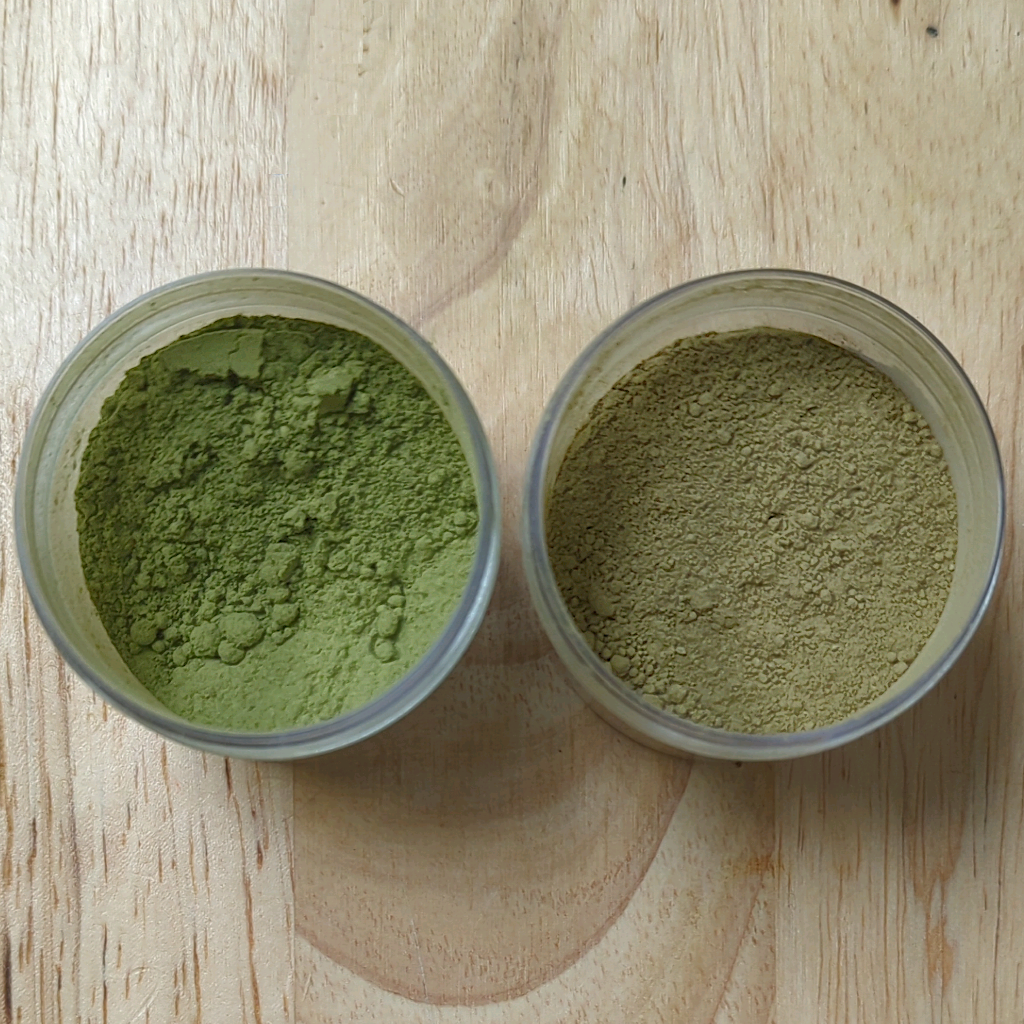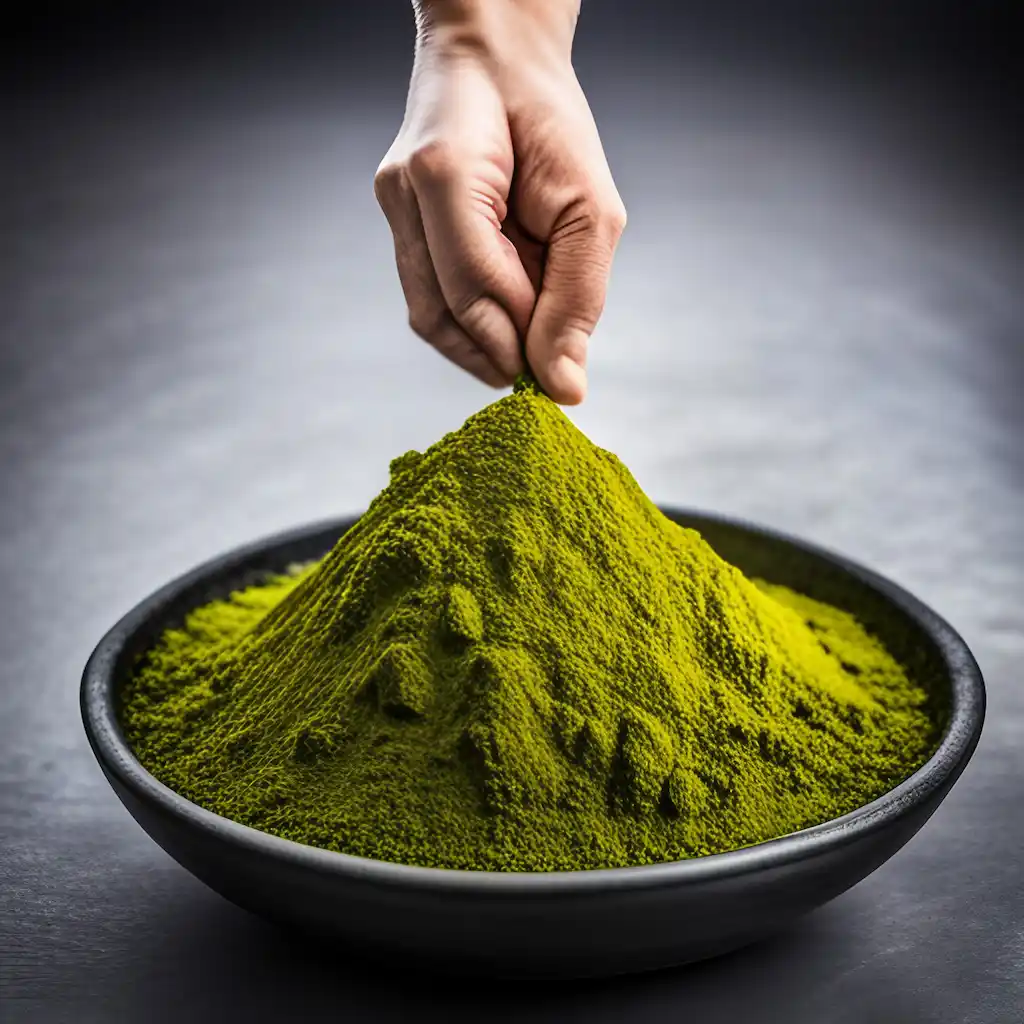Maeng Da kratom may be the most popular kratom strain on the market today. The Maeng Da strain gets its name from the Thai word for “pimp” or “dragon.” The classic claim is that it is the result of cross-breeding kratom trees from various sources to achieve a sort of “super kratom.” You will find this story across the internet and the exact details vary by kratom vendor.
The truth is that the origins of Maeng Da kratom are not quite as illustrious as some claim. That, and there is no such thing as a Maeng Da leaf. The name is simply used to refer to various potent kratom strains that are higher in alkaloid content. The alkaloid content of a kratom leaf is dictated by the natural conditions in which it’s grown as well as the curing process that takes place once the leaf is picked.
Overview of the Kratom Leaf
Mitragyna speciosa is a tropical deciduous and evergreen tree in the coffee family. It grows to a height of 30 to 40 feet (15 meters) with a trunk diameter of up to 15 inches (38 centimeters). It has large, glossy, ovate leaves that grow to about eight inches (20 centimeters) long and five inches (12 centimeters) wide on average.

This misunderstood tree was first described scientifically by Dutch botanist Pieter Willem Korthals in 1839. It was previously known by the names “Biak” and “Ketum.” Kratom grows naturally in Thailand, Malaysia, Indonesia, Myanmar, and Papua New Guinea. In some areas of these countries, natives still use kratom for traditional remedies to this day as well as for help getting though long work hours.
Kratom use in the United States is on the rise. After the results of a 2021 national survey, it was estimated that there were approximately 1.7 Americans that had used kratom at least once in the previous 12-month period.
Maeng Da kratom is often chewed fresh or dried and brewed as tea. Some users have reported smoking it. This is technically possible, but not advised due to the inherent inhalation of other potentially dangerous chemicals like tar. There are those who have even ventured as far as snorting kratom products despite the obvious complications associated with that route,
Dried leaves are most often ground into powder or paste form. Maeng Da kratom capsules are also on the market for those who can’t tolerate the leaf’s taste or consistency or for times when portability is a priority. Other forms of kratom are found some retailers as well, but some versions, like kratom extract products, tend to be recommended only for advanced or experienced users.
In all commercially-available kratom, most of the processing is carried out by large industrial machines. The drying process itself is very nuanced as it influences the chemical makeup of the final product and is the real driver behind what most people have been trained to refer to as vein color. More on that next.
How Different Types of Maeng Da Kratom Products Are Produced
The best Maeng Da kratom comes from trees that are grown in the lush rainforests of Indonesia’s Borneo, the third largest island in the world. Socratic Solutions sources kratom grown in two locations depending on the strain: wild growth areas in West Kalimantan and a plantation along the banks of the Kapuas Hulu River.
In these areas, the soil stays at a pH level of around 5.5 to 6.5, which is the optimal range for a kratom tree to flourish. Due to the region’s continuous rainfall, nutrients are cycled through the soil regularly, meaning the tree is free to feed on a wide variety of beneficial chemicals.
The result is a leaf very high in the full spectrum of alkaloids. According to our farmers, once a tree reaches a mature age of six years, it is ready for its first harvest. In the wild, mature trees tend to have a more robust alkaloid profile compared to their young counterparts. This helps keep the potency of Maeng Da consistent relative to other different kratom strains.

Harvests are done in rotating sections so no single area is totally depleted without being allowed to replenish itself fully before the next run. Sustainable harvesting techniques are key to making sure there will be a continuous supply of high-quality kratom in the future. The type of tree also plays a role in the local ecosystem.
Once the fresh leaves are picked, they are dried, or cured. This is where the difference between strains comes in. Though you may see yellow strains offered from time to time as an offshoot of red types, Maeng Da kratom powder is generally available in red, white, and green varieties. How each one becomes it own unique strain of kratom is covered in the next sections.
Different kratom types are said to provide different effects. with red and white styles varying the most from the leaf’s natural state. Many kratom enthusiasts consider the effects of green to be a balanced split down the middle.Red Vein
In general, a vein red vein kratom strain is a product of oxidation, which occurs after exposure to high heat and humidity. When outdoor drying, this is facilitated by direct sun exposure. For indoor red drying, farmers use UV lights and humidifiers to achieve the same result.
Some sources use fermentation with alcohol as a different method of influencing alkaloid content. The alcohol is chosen because it inhibits the growth of mold and bacteria. Darker, more chocolate-colored strains like Bentuangie are usually produced in this way. Alternatively, Red Maeng Da kratom is more commonly not a fermented variety.
As the leaf begins to turn red and oxidation takes place, the alkaloid content of the leaf changes. Leaves that are allowed to oxidize more end up containing more 7-hydroxymitragynine and less mitragynine, as the latter turns into the former during the process. This is why Red Maeng Da provides more of a relaxing experience. There is also a change in the rest of the alkaloids and flavonoids that constitute the leaf.
White Vein Kratom Powder
There are two ways that White Maeng Da kratom is created. For the first, stems and veins are added to what would have otherwise been green kratom, which is described under the next heading. Since stems and veins are often higher in mitragynine, this is a way to boost its content in the mixture and it gives the kratom an overall reddish tint.
The second method requires the leaves to be dried as far as possible from light, heat, and humidity. As we mentioned when discussing reds, these things actually lead to oxidation, which changes the chemical makeup of the leaf.
With white vein kratom, the goal is to keep a high ratio of mitragynine to other compounds found in kratom to provide a more energetic and upbeat experience. If the leaves are cured with this second method, the final product will be a powder that is only slightly varied from green, but it is still possible to distinguish between the two when placed side-by-side

Green Maeng Da Kratom Powder
Green vein kratom is the easiest to achieve. Kratom is picked, sorted, and rinsed before being hung on special racks to dry. These racks are much like clotheslines and allow for airflow in between leaves for even drying.
Our Green Maeng Da kratom spends 20% of its dry time outside in a shaded area before moving indoors for the remaining 80% to dry in low light, low humidity conditions. The little bit of light and humidity exposure allows for a bit of oxidation, but nothing like what we see in red cures.
This allows some of the mitragynine to be converted into 7-hydroxymitragynine, though the magnitude of this conversion is unknown. As previously mentioned, there are many other important alkaloids present worth nothing. Each one of these contributes to the overall effects.
Yellow Types
Yellow Maeng Da kratom may be considered by some to be a more stimulating version of classic reds. Many farmers like to use fermentation bags to develop their yellows, which involves a few extra steps and a bit more caution. The final product is heavily oxidized. More information about oxidation in tea leaves can be found here.
Dosage
Your dose will really depend on your tolerance level and the strength of the product you’re using. Good Maeng Da kratom provides at least 1.5% mitragynine, with the exception of red varieties., which are less reliant on this chemical for their effects. There are more alkaloids that contribute to the overall effects of kratom, but that’s a topic for another post.
Given a “good” strength leaf, we usually advise starting with anywhere between 1-3 grams of Maeng Da kratom, based on body weight, taken by mouth to assess tolerance. In roughly 50 minutes following consumption, you should be able to tell how a given dose will affect you, then you can always add more if needed.

Caution should be taken to not consume too much at one time, otherwise, you are likely to experience nausea. Under 4 g is considered a light dose, from 5-8 is a moderate dose, and anything over that would be considered heavy.
Again, this is based on “good” kratom. If your kratom is weaker than this, you would need more to achieve the same effect. Some vendors offer products with as little as 0.5% mitragynine, while our top-shelf premium leaf contains well over 2%. The darker the kratom, the less of its effects come from this alkaloid relative to others.
Most Maeng Da kratom users consume it in the beginning of the day and then again later in the afternoon, though some may choose to add a third dose later based on their hours and the day’s demands. Our philosophy is to dose twice daily as to allow for some time each day for kratom to clear the system. This helps avoid tolerance and dependence.
If you choose to consume it on a daily basis, it is strongly advised to take breaks periodically to avoid dependence. Many choose to use it during the week, taking weekends off as a wash-out period. This author has determined that 12 weeks is about the longest practical period of continuous use before taking a week or two off.
Forms
Maeng Da kratom is available in several forms:
- Powder: by far the most common way to take Maeng Da kratom and implicated in the “toss and wash” method. Most grinds result in a powder of around 40 microns in particle size with nano and micro types being even smaller. Common doses may range from 2-8 g.
- Capsules: most kratom capsules are size 00, which is standard in the dietary supplement industry. Each one usually contains between 500-700 mg of powder, as it is impossible to fit much more. Heavy kratom users must consume many standard kratom capsules.
- Extracts: extracts are a way to get more of kratom’s active ingredients per unit of powder of capsule. Special chemical reactions take place that isolate these ingredients, meaning you have to take less product. Extracts come in a wide range of strengths and are found as powders, capsules, and liquids.
- Resin: technically an extract, resin involves isolating alkaloids from the plant material and then running that through a filter. After the leaf is discarded, the remnants are dried to create kratom resin. Resin can be used either straight or in the production of edibles.
- Edibles: kratom and/or extract can be mixed in with other ingredients to create some interesting culinary treats. The alkaloid content of edibles depends on the strength of the kratom powder or extract used.
How to Buy Maeng Da Kratom
When you’re on the hunt for Kratom, it’s crucial to know where to buy from a reputable source. The market is saturated with vendors, and not all are created equal. Here are some key factors to consider when choosing a vendor for your Kratom needs.
Firstly, quality should be your top priority. High-quality kratom is derived from mature plants harvested by experienced farmers. Trustworthy vendors offer lab testing results to prove their products’ authenticity and purity. The best green will test at 1.5% mitragynine minimum. Always look for sources who are transparent about their product sourcing and quality control measures.
Customer service is another important factor. The best vendors are those who prioritize their customers’ needs and satisfaction. Look for vendors who are responsive, helpful, and knowledgeable about their products. Check out customer reviews and ratings to get a sense of their service quality. Check to ensure the reviews posted on their website are third-party verified.
Lastly, consider price. While it’s true that you often get what you pay for, that doesn’t mean you should overpay for Kratom. Reputable vendors offer competitive prices without compromising on quality. Be cautious of prices that seem too good to be true, as they may indicate inferior quality.
Final Words
There have been tens if not hundreds of Mitragyna speciosa strains conceived throughout the industry. None are quite as well-known as Maeng Da kratom and for good reason. The name Maeng Da is often reserved for strains with the highest concentration of overall alkaloids.
If you are looking to experience it at its absolute finest from a company that centers its business around you instead of profits, you can shop right here. You’ll see and feel the difference once your package arrives, which is always fast and free. We hope you now have a better understanding of what Maeng Da kratom truly is and how it could benefit you.


Latest from our blog
Please Read….This is Urgent
In loving memory of Ryan, a special individual who recently passed away, we honor his [...]
Damiana Exposed: Special Look At Turnera diffusa (2023)
Damiana Exposed: Special Look At Turnera diffusa (2023) Damiana is a wild shrub native to [...]
Kanna: A New Look At An Exciting Mood Booster (2023)
What is kanna? Some say the botanical has similar effects to MDMA, or ecstasy. Others [...]
Blue Lotus Flower: Unveiling Its Mystical & Therapeutic Powers
To cut to the chase and pickup potent 25x blue lotus extract today while enjoying [...]
Red Bubble Kratom Extraction: A Comprehensive Guide
As a kratom enthusiast, have you ever wondered if there was a method for getting [...]
Aug
Maeng Da Kratom 101: Accurate Info You Can Trust
Maeng Da kratom may be the most popular kratom strain on the market today. The [...]
Aug